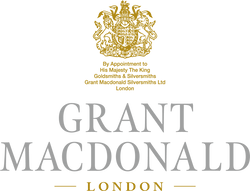Heraldry is something we are well versed in at Grant Macdonald London. Our long association with the City of London Corporation, Lord Mayor, Guildhall, Livery Companies and Sheriffs has meant we have made many pieces using crests and coats of arms over the last five decades. From chains of office to ceremonial regalia and tableware, we are well versed with the Heraldic Law. And one heraldic beast that features regularly in our work is the mythical dragon, associated with London since the 14th Century. But have you ever wondered why?
The answer to that question is explained by the blazon - a description of the coat of arms recorded in the College of Arms located on Queen Victoria Street in the heart of the City. The College is the repository of all approved coats of arms, overseen by officers called heralds. Originally, coats of arms represented the right to carry weapons and raise armies for the old aristocracy, later adopted as an honour for companies and institutions. The City of London blazon describes the arms (the symbols in the centre) the crest (the symbol at the top) and the supporters (the symbols on either side).

In this case, the arms are argent (on silver or white) with cross gules to symbolise St. George (red cross) with a sword to represent St. Paul (who was beheaded with one). The crest sits on top of a knight’s helmet, and is a sinister (left-hand) dragon’s wing with a red cross on the underside. The supporters are two dragons, with more red crosses on the wings. Finally the motto of the City - Domine Dirige Nos or Lord Guide Us.
The dragon symbol dates back to the 1300s, competing with a lion symbol in different versions of the arms for a while. It was often confused with a heraldic lion, in fact. Over the years it became more distinctive with bat-like wings, and the addition of scales, ridged back spines, and long barbed tongue - which resembles an arrow and might be a highly abstracted image of flames.

For centuries, master craftsmen - especially silversmiths - have added their own embellishments and ideas to redefine the look of heraldic symbols, and the London Dragon is no exception. It’s not like a modern corporate logo with a fixed typeface and Pantone reference colour scheme. Interpretation is part of the tradition in heraldry. We have produced dragons that are muscular like the heraldic lions, we have also made them with far more serpentine bodies to make striking handles for ceremonial cups.

Heraldry is an ever changing medium in some respects, but the essence of heraldic tradition is a lot like silversmithing and our service philosophy at Grant Macdonald. A coat of arms must be unmistakable, rooted in history and above all unmistakable. As unmistakable as the colour of silver, and as unmistakable as the fine craftsmanship and perfect detailing we pride ourselves upon. That tradition and reputation for excellence is, in many respects, our own coat of arms. It might not be a dragon, but it is just as distinctive.

